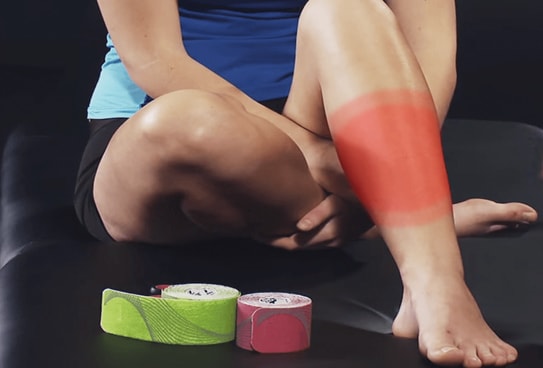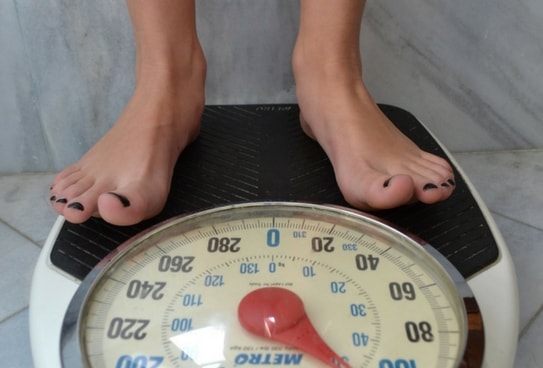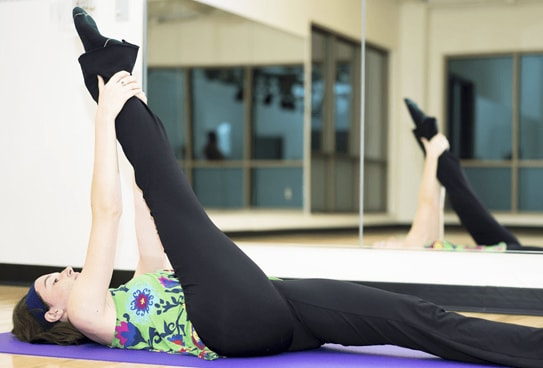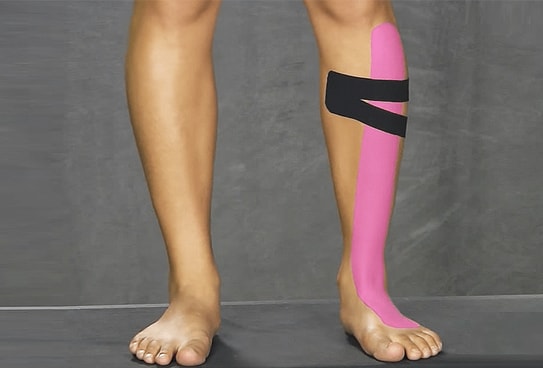What’s worse than having shin splints?
Not being able to run because you have shin splints, that’s what!
If you thought it was trying to find the best shoes for shin splints or getting rid of shin splints, you’re dead wrong.
Picture This:
You made a goal to start running to get in shape or meet a targeted goal.
You spent days (or weeks) searching online to find the best running shoes.
You’ve gotten all your accessories: heart rate monitor, running shorts, dry fit t-shirt, compression socks, some cool sunglasses, and even a headband.
You’re Jackie Mooning it and eager to hit the ground “running.”
Finally the day arrives, Runday.
You look at your clock and notice the time – it’s run-o’clock.
You toss on your gear, perform what you think are stretches (probably got this from watching others), and you’re off.
Then… it all goes downhill faster than the stock market’s reaction to plunging oil prices.
Your tibialis anterior muscles feel like they’re on fire. It’s as though someone just sucker-kicked you in the shin for no damn reason.
Now that Runday has come to a premature ending, you’re disappointed and frustrated. You had high hopes for this session.
Naturally, a million questions race through your mind, each starting with why or how.
Chances are you’re not a medical expert so you can’t make any astute observations. When all is said and done, there’s only one thing left to do…
BLAME THE SHOES!!!
You lug yourself back home and start scouring the Internet for quick solutions. You’re on a hunt to find the best shoes for shin splints.
However, your search turns up all kinds of secret home remedies involving lotions, potions and stupid notions.
You discover Dr. Shinman, the world’s leading expert on shin splints.
Somehow you ignore all the shady ads covering his webpage and proceed to purchase Dr. Shinman’s #1 rated solution.
Dr. Shinman is so cool he’s offering his system for pennies – a one-time payment of $19.99. That’s 75% off the original price!
You’re feeling a bit more confident now that you’ve bought the best solution in the world.
You’re ready to try out the doctor’s Secret Guide to Stronger Shins: A Simple Shin-sational Solution.
After going through the “shinanigans,” you try to run 48 hours later only to realize nothing has changed.
You still have shin splints.
You become even more depressed and eventually you give up on this whole fitness thing because it wasn’t all you thought it would be.
Your future doesn’t look bright.
Sadly, there are many new runners (a few ‘experts’ too) who fall victim to the cycle above.
At no point, do these folks stop to consult a medical expert or bust open an encyclopedia to educate themselves.
Why would they? It’s much easier to pay for a solution, right?
Well today’s post will try to be that honest source that you always seem to neglect.
What’s more, it will cost you nothing.
So save it, bookmark it or print it. Whatever you do, just make sure you read it.
The Best Shoes for Shin Splints Is A Lie!
It’s true.
There may be something like the “most appropriate shoes” for an occasion but that’s probably it.
You can also get yourself some compression socks, sleeves or stockings to wear. They should help your shins better than shoes for shin splints.
Now… the best running shoes are the ones that fit your feet correctly.
Yep, that probably just blew your mind.
As far as finding shoes for shin splints, well those don’t exist. When was the last time you saw someone wearing shoes on their shins?
Furthermore, how can a shoe be made to target the shins? That kind of sorcery doesn’t exist yet.
What Are The Best Running Shoes To Buy?
Since you’re hell bent on getting an answer to this question we’ll oblige.
The two most popular brands of running shoes are Saucony and Asics.
This conclusion was drawn from the number of people who use these products in casual running or marathons.
Yes, Nike does make running shoes, and so do many other companies.
This is why asking questions about the best running shoes for shin splints are meaningless.
As consumers, having choices is great. The important thing, however, is to make the choice that’s right for your feet.
Don’t get caught up in fashion either or worry about what your favorite athlete is wearing. They’re being sponsored, you aren’t.
So invest in a pair of proper shoes and let everyone else worry about looking good instead of feeling good.
What Causes Shin Splints & How Does It Affect You?
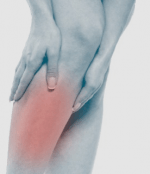 In order to address a problem, you must first understand it.
In order to address a problem, you must first understand it.
The scientific name for shin splints is Medial Tibial Stress Syndrome.
In a nutshell, it refers to the pain along the inside of your leg, just behind your shin (aka tibia).
This is the anterior/medial region of your lower leg.
As a runner or athlete, you place a crazy amount of pressure on your feet.
We won’t get into the PSI’s or torque talk. All you need to know is that when the tissues in your lower legs are subjected to repetitive stress, they become inflamed.
Poor mechanics, overtraining, or imbalanced muscles and strength further amplify this problem.
In addition to bad form things such as poorly fitted shoes, old shoes, and non-effective or wrongly prescribed orthotics (like Dr. Scholl’s), can cause shin splints.
Some people also think that they’re invincible and try to power through the pain. However, that only causes the pain to increase, which leads to extreme soreness or swelling. It can also cause severe damage.
Don’t be like those idiots!
Listen to your body and logic, not your ego.
4 Ways Shin Splints Can Be Problematic
If you’re new to the world of exercise and running, it can be a wonderful experience.
However, if you think you’ll go from couch executive to insanely fit athlete in a single day, you’ll hurt yourself.
Your body will be exposed to lots of unfamiliar movements such as sprinting, playing a sport, or abrupt start and stop motions.
Typically, new runners or wannabe athletes tend to experience anterior shin splints. These new runners set out to run a ton of miles with no proper form or training.
This forces the anterior tibialis muscle to work overtime in an effort to control the landing force of the forefoot.
In the end, runners with poor form or those using the balls of their feet without proper shoes may get anterior shin splints.
If you have any kind of imbalance in your legs or feet, this can result in posterior shin splints.
Tight muscles in your calves or pronated (flat) feet are usually the causes of this condition.
Having flat arches is especially problematic because each step stretches your posterior tibialis muscle.
This constant stretching will eventually damage the muscle over time and you’ll start experiencing pain on the insides of your lower legs.
Another major issue is something called compartment syndrome.
The AAOS explains that this condition happens when the pressure and swelling caused by damaged muscles occurs in a specific section (compartment) of your legs.
If the pressure in a section of your leg is greater than the normal pressure in the leg veins, it constricts those veins.
The reduction in the flow of blood can lead to muscle cramps.
As the problem worsens you’ll start to experience numbing, swelling and coldness in your legs and feet.
Leaving this problem untreated can cause major tissue damage in these regions.
In extreme situations, these problems may also be the result of a stress fracture. These are fractures or cracks in a weakened part of your tibia.
Continuous excessive force on your tibialis muscles makes them weak and eventually they become fractured.
It isn’t uncommon to see basketball players or hard-surface runners develop stress fractures from straining their lower leg muscles.
By now you should be slowly starting to understand why the best shoes for shin splints don’t exist.
The next thing you need to know about are the symptoms of shin splints.
How Do You Know If You Have Shin Splints?
If you’ve had shin splints before you probably know what they feel like already.
However, if you’re here reading about them, you want to know more. So here are some symptoms of shin splints:
- The area becomes tender and extremely sensitive
- Dull aches and pains are felt around the inflamed muscles
- The affected area becomes swollen and slightly red
- There’s pain along the front of the tibia causing anterior shin splints
- Pain or small bumps along the insides of the lower legs and on the tibia causes posterior shin splints
How Are Shin Splints Treated And Diagnosed?
Assuming you’re not a doctor or PT, you’ll need to see one. They will be better at diagnosing the problem than you.
Your doctor will perform a series of tests on your legs to determine the problem.
If necessary, they may send you for an X-ray or MRI. But that’s only if the injury appears to be much more severe than originally thought.
After your initial diagnosis, your doctor will provide you with some options for treatment.
These options are mostly nonsurgical but in rare cases surgery might be required. Treatments may include:
Nonsurgical
- Rest
- Cold therapy
- Special tape and taping techniques
- Wearing compression socks
- Physical therapy sessions
- Cortisone shots
- Deep tissue massage
- Posture correction therapy and proper alignment techniques
Surgical
If necessary, a fasciotomy may be performed. This procedure requires small incisions on the lower leg in order to remove small layers of fascia and reduce pressure.
Fascia refers to the connective tissue around muscles.
This type of treatment can sideline patients for at least 3 months before they can begin doing strenuous activity again.
Final Thoughts
There’s obviously a lot more going on in your legs when you start to experience shin splints. And since your feet are extremely important to your mobility, you should make take proper care of them.
Buying a pair of proper shoes after determining your correct size is one of the best things you can do.
The next time you decide to google the best shoes for shin splints, don’t fall victim to stupid claims or ridiculous treatments for shin splints.
There’s no need to pay some quack for their snake oil.
You need to be smart and use your brain a bit.
If you are hell bent on throwing money away, then just donate it to charity or something.
